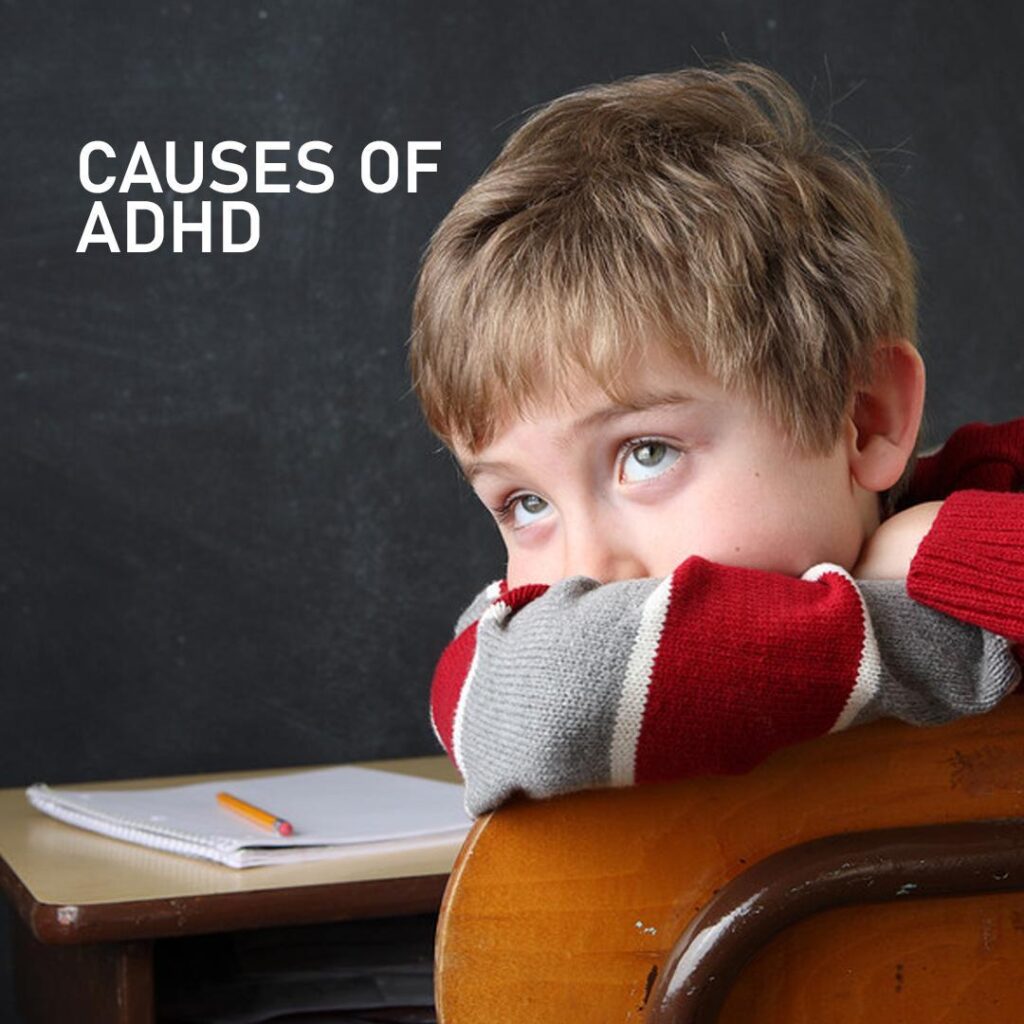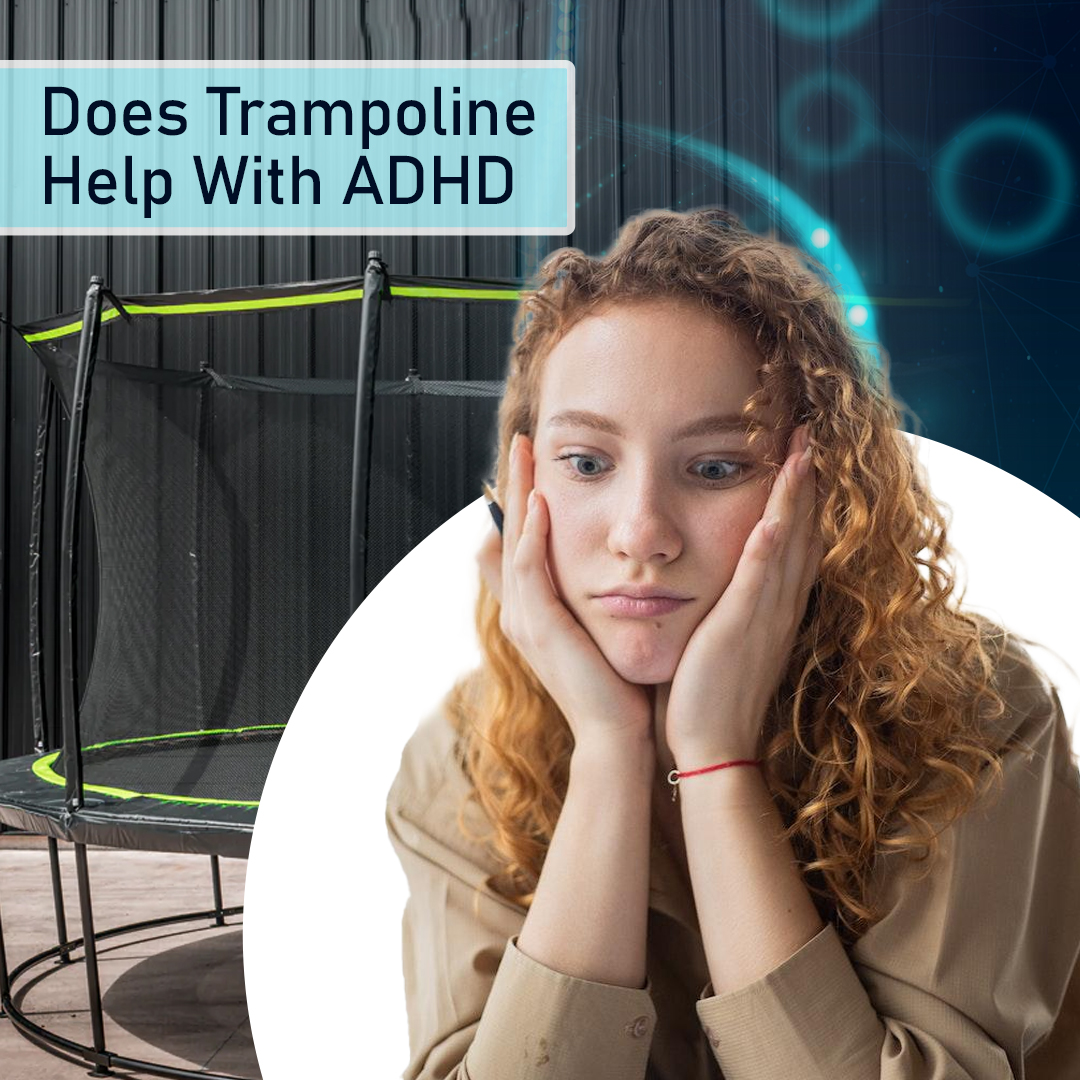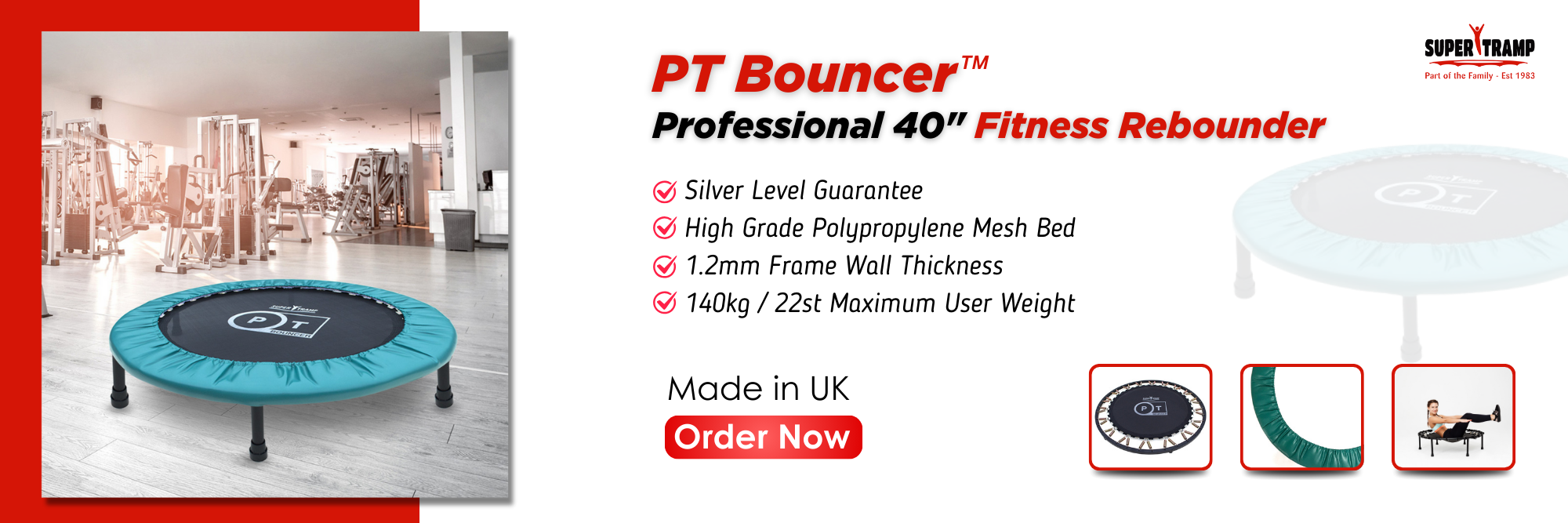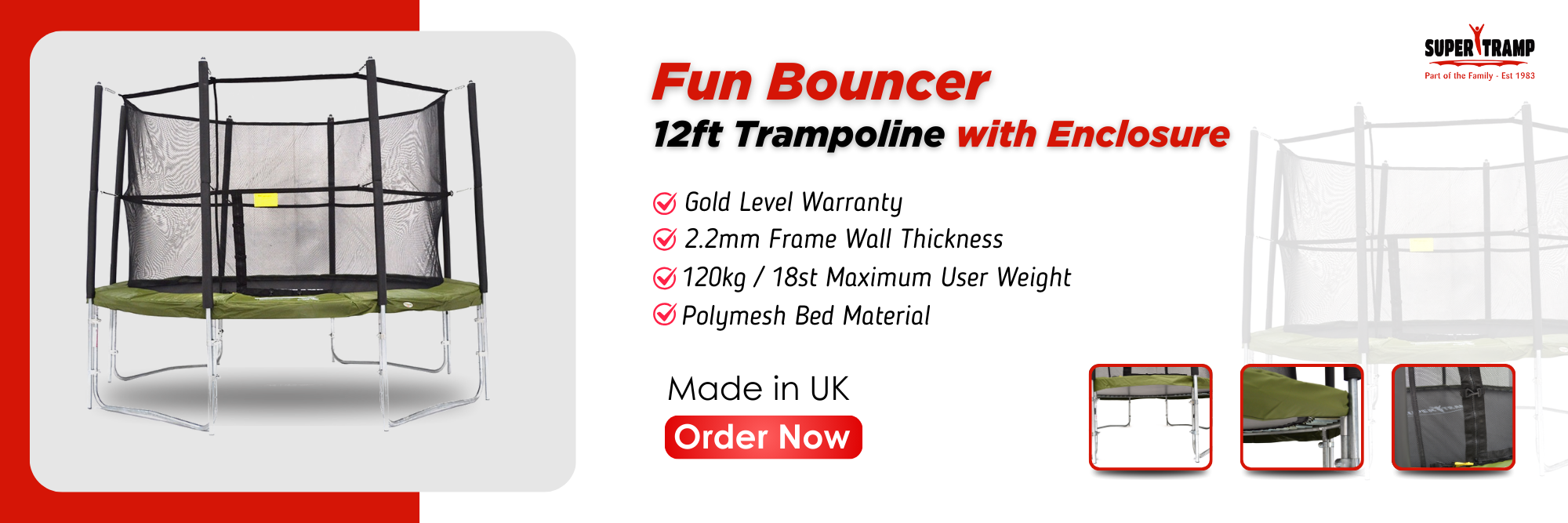Table of Contents
ToggleTrampolines are often seen as a fun activity for children and families alike, offering a way to bounce and play outdoors. But did you know that beyond just enjoyment, trampolines can also provide significant benefits for individuals with Attention Deficit Hyperactivity Disorder (ADHD)? The rhythmic bouncing motion and physical activity involved in trampoline use have been shown to improve focus, reduce hyperactivity, and offer a therapeutic outlet for those managing ADHD symptoms.
According to estimates, the prevalence of ADHD in adults in the UK is between 3% and 4%, with a roughly 3:1 male-to-female ratio.

In this article, we’ll examine the possible advantages of trampolines, including how their repetitive motion and physical exercise can enhance concentration, lessen hyperactivity, and give an enjoyable and interesting means of managing symptoms of ADHD. Now, let’s bounce into exploring how trampolines could be more than just fun—they might be a game-changer for managing ADHD symptoms effectively.
What is ADHD?
Attention Deficit Hyperactivity Disorder (ADHD) is a neurodevelopmental disorder that affects millions of children and adults worldwide. It is characterised by persistent patterns of inattention, hyperactivity, and impulsivity that interfere with daily functioning and development. ADHD can manifest differently in each individual, making it a complex condition to manage.
Symptoms

Many kids could find it difficult to focus, wait their time, be patient, be fidgety, and behave impulsively. The symptoms of hyperactivity, impulsivity, organisation, and/or inattention in children who fit the diagnostic criteria for ADHD, however, are notably more severe than would be predicted for their age or developmental stage. Significant pain results from these symptoms, which also cause issues in relationships, at work or school, and home. It is not the case that the symptoms are the consequence of a person being obstinate or incapable of following directions or tasks.
The symptoms of ADHD are typically categorised into three types:
- Inattention: Difficulty sustaining attention, following through on tasks, and organising activities. This can lead to forgetfulness, distractibility, and poor time management.
- Hyperactivity: Excessive fidgeting, inability to stay seated, and a constant need to move. This is often seen in children who are described as “always on the go.”
- Impulsivity: Acting without thinking, interrupting others, and difficulty waiting for one’s turn. Impulsive behaviours can result in accidents and trouble in social situations.
Three primary forms of ADHD exist:
- Predominantly inattentive presentation: Predominantly inattentive presentation is a subtype of ADHD characterised by difficulties sustaining attention, organising tasks, and maintaining focus, often without the hyperactive or impulsive behaviours seen in other forms of the disorder.
- Predominantly hyperactive/impulsive presentation: Predominantly hyperactive/impulsive presentation is a subtype of ADHD marked by excessive physical restlessness, difficulty staying seated, and impulsive actions or decisions without considering consequences, often overshadowing symptoms of inattention.
- Combined presentation: Combined presentation is a subtype of ADHD that includes both inattentive and hyperactive-impulsive symptoms, leading to challenges with focus, organisation, and impulse control. Individuals with this subtype exhibit a blend of difficulty sustaining attention and managing hyperactive behaviours.
How Trampolines Help with ADHD

In-ground Trampolines can be an effective tool for managing ADHD, providing physical activity that helps improve focus and reduce hyperactivity. The rhythmic motion and sensory stimulation of jumping offer numerous benefits for individuals with ADHD. Here are some benefits that trampoline add to help with ADHD:
- Physical Activity and Energy Release
- Benefit: Fitness Trampolines provide a fun and effective way for individuals with ADHD to engage in physical activity and release excess energy.
- Impact: Regular jumping sessions help to reduce hyperactivity, allowing for calmer behaviour during other activities.
- Improved Focus and Attention
- Benefit: The repetitive motion of jumping on a performance trampoline can enhance concentration and attention span.
- Impact: This can lead to better performance in tasks that require sustained attention, such as schoolwork and chores.
- Sensory Integration
- Benefit: Trampolines offer sensory stimulation that can help individuals with ADHD process and respond to sensory information more effectively.
- Impact: Improved sensory integration can lead to better coordination and a greater ability to manage sensory input in everyday environments.
- Stress and Anxiety Reduction
- Benefit: Physical activity, including trampoline use, is known to reduce stress and anxiety levels.
- Impact: Lower stress and anxiety contribute to a more relaxed and focused state of mind, enhancing overall well-being.
- Motor Skills Development
- Benefit: Jumping on a trampoline helps develop gross motor skills, such as balance, coordination, and strength.
- Impact: Enhanced motor skills improve physical capabilities and boost confidence in physical activities.
- Social Interaction
- Benefit: Trampolines can be used in social settings, encouraging interaction with peers and family members.
- Impact: Social play on trampolines promotes teamwork, communication, and positive social experiences.
- Routine and Structure
- Benefit: Incorporating trampoline time into a daily routine provides structure and consistency.
- Impact: A regular schedule helps individuals with ADHD develop better time management skills and a sense of stability.
- Positive Reinforcement
- Improves Brain Health: Physical exercise on a trampoline increases blood flow to the brain, enhancing cognitive function and brain health.
- Promotes Detoxification: The lymphatic system is stimulated by the bouncing motion, aiding in the removal of toxins from the body.
By integrating trampoline activities into the lives of individuals with ADHD, we can harness these benefits to improve their physical, mental, and emotional well-being.
How to Use a Trampoline Safely for ADHD

Trampolines can be a beneficial tool for individuals with ADHD, providing a fun and engaging way to expend energy and improve focus. However, safety is paramount to ensure a positive experience. Here are some guidelines for using a trampoline safely:
Safety Tips
- Regular Maintenance: Ensure the trampoline is in good condition with no tears in the mat, intact springs, and secure padding.
- Safety Net: Use a trampoline with a safety enclosure net to prevent falls off the trampoline surface.
- Limit Jumpers: Only one person should jump on the trampoline at a time to prevent collisions and injuries.
- Trampoline ladders: Trampoline ladders offer a safe, easy way for users, especially children, to access the trampoline, featuring sturdy, non-slip steps to prevent accidents.
- Proper Attire: Wear appropriate clothing and trampoline socks. Remove any sharp objects or jewellery before jumping.
- Warm-Up and Cool Down: Encourage warming up before jumping to prevent muscle strains. Implement cool-down activities to gradually lower heart rate and reduce the risk of injury.
Supervision
- Adult Supervision: Always have a responsible adult present to supervise trampoline use. The supervisor should be attentive to ensure safety guidelines are followed and intervene if necessary.
- Clear Rules: Establish clear rules for trampoline use, including no somersaults or flips unless under professional supervision and no roughhousing or pushing.
Causes of ADHD

ADHD, or Attention Deficit Hyperactivity Disorder, is a complex neurodevelopmental disorder with multifactorial causes. While the exact origins of ADHD are not fully understood, research suggests that it is influenced by a combination of genetic, environmental, and neurological factors. Here are some key factors thought to contribute to the development of ADHD:
- Genetic Factors: ADHD tends to run in families, indicating a strong genetic component. Children with a family history of ADHD are more likely to develop the disorder themselves. Specific genes related to neurotransmitter regulation (such as dopamine and norepinephrine) and brain development are believed to play a role.
- Brain Structure and Function: Differences in brain structure and function have been observed in individuals with ADHD. Areas of the brain responsible for attention, impulse control, and executive functions (such as the prefrontal cortex and basal ganglia) may develop differently or function atypical in those with ADHD.
- Neurotransmitter Imbalance: Neurotransmitters are chemical messengers in the brain that regulate various functions, including attention, behaviour, and mood. Imbalances in neurotransmitters like dopamine and norepinephrine, which are involved in regulating attention and impulse control, are linked to ADHD symptoms.
- Prenatal Factors: Certain prenatal factors have been associated with an increased risk of ADHD. These include maternal smoking, alcohol or substance use during pregnancy, premature birth, low birth weight, and exposure to environmental toxins.
- Environmental Factors: Early life exposure to environmental factors, such as lead exposure, prenatal stress, maternal smoking, and dietary factors, may contribute to the development of ADHD. However, the impact of these factors can vary widely among individuals.
- Brain Injury or Trauma: Traumatic brain injury, particularly during early childhood, has been linked to an increased risk of ADHD. Injury to the frontal lobes or areas of the brain involved in executive functions can disrupt normal brain development and functioning.
- Social and Psychological Factors: While not direct causes, social and psychological factors can exacerbate ADHD symptoms. Factors such as family stress, inconsistent parenting practices, chaotic home environments, and lack of structure may contribute to difficulties in managing ADHD symptoms.
ADHD in School Children
Children with ADHD often struggle in school. They may have trouble following instructions, completing homework, and interacting with peers. This can lead to academic underachievement and social difficulties, further exacerbating the challenges they face.
ADHD in Adults
Adults with ADHD may experience difficulties in the workplace, maintaining relationships, and managing daily responsibilities. Symptoms can manifest as chronic lateness, forgetfulness, and an inability to prioritise tasks, which can significantly impact their personal and professional lives.
It’s important to note that ADHD is a complex disorder, and individual cases may involve a combination of these factors. The interplay between genetic predisposition, brain development, and environmental influences contributes to the heterogeneity of ADHD presentations and challenges in understanding its exact aetiology.
Conclusion
We have discussed the various aspects of ADHD in this blog, emphasising the difficulties that both adults and children with the condition must deal with. We talked about how trampolines, by offering physical activity, improving focus, integrating sensory experiences, and lowering stress, can be a useful aid in controlling the symptoms of ADHD. The advice for supervision and safety rules guarantee safe and efficient trampoline use.
Trampolines offer a unique and enjoyable way to address some of the core symptoms of ADHD. The physical and mental benefits, from improved motor skills to better stress management, make them a valuable addition to traditional ADHD management strategies.
Before incorporating trampoline activities into an ADHD management plan, it’s crucial to consult with healthcare providers. They can offer personalised advice and ensure that this fun and dynamic tool is used safely and effectively. Engage with your healthcare professional to create a balanced, well-rounded approach to managing ADHD and enhancing overall well-being.
Trampolines can benefit kids with ADHD by providing sensory stimulation and opportunities for physical activity, potentially helping to improve focus and behaviour.
Activities such as aerobic exercises, swimming, martial arts, and structured sports can be beneficial for children with ADHD, promoting focus and positive behaviour.
Sports that involve structured routines and continuous movement, like swimming, martial arts, or soccer, are often beneficial for children with ADHD, as they promote focus, discipline, and physical exertion.
Trampolines can stimulate the brain through coordination and balance activities, potentially enhancing cognitive function and motor skills.
ADHD kids often excel in tasks that require creativity, spontaneity, and the ability to think outside the box.
DON'T MISS...
- How to Make Your Trampoline Super Bouncy to Bounce Like a Pro
- 5 Exciting Ideas to Make Your Bash the Talk of the Town
- Why Somersault System Are Best for Trampoline Parks
- Inspiring Contemporary Garden Design Ideas to Refresh Your Backyard
- Reach New Heights: Discover The Best Trampolines for Higher Jumps





